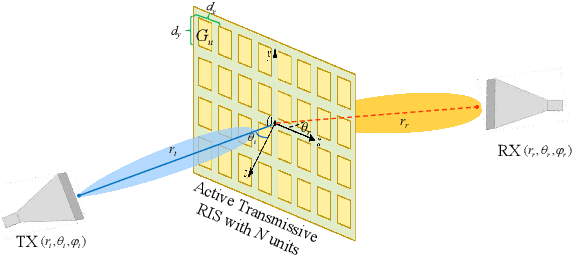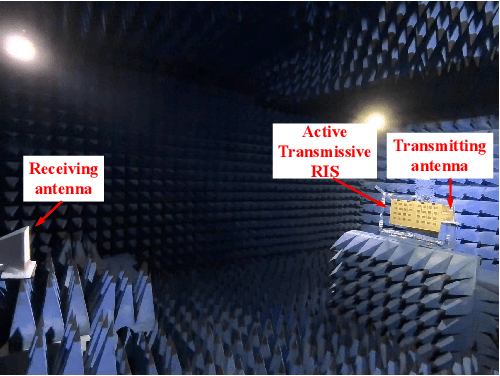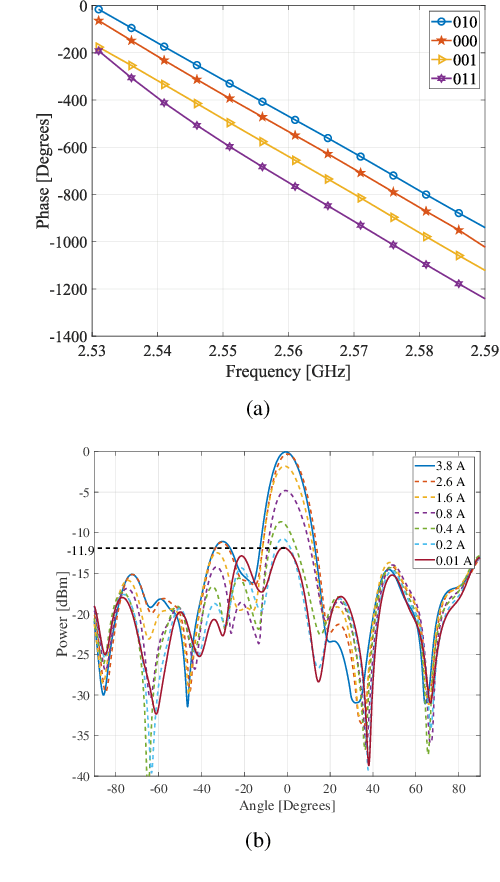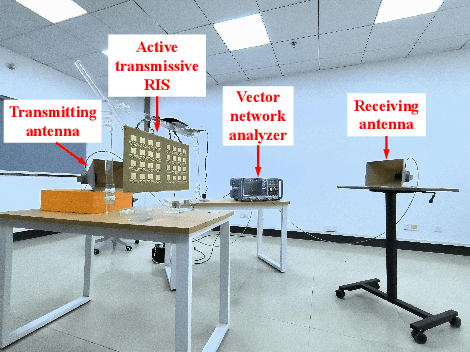Xue Ren
Design and Prototyping of Filtering Active STAR-RIS with Adjustable Power Splitting
Jan 19, 2025



Abstract:Reconfigurable Intelligent Surfaces (RISs) have emerged as a transformative technology for next-generation wireless communication systems, offering unprecedented control over electromagnetic wave propagation. In particular, Simultaneously Transmitting and Reflecting RISs (STAR-RISs) have garnered significant attention due to their full-space coverage. This paper presents an active STAR-RIS, which enables independent control of both transmission and reflection phases and features out-of-band harmonic suppression. Unlike the traditional passive RIS, the proposed design integrates active amplification to overcome the inherent passive losses, significantly enhancing signal strength and system performance. Additionally, the system supports dynamic power allocation between transmission and reflection modes, providing greater flexibility to meet diverse communication demands in complex propagation environments. The versatility of the design is further validated by extending the Radar Cross Section (RCS)-based path loss model to the STAR-RIS. This design improves efficiency, flexibility, and adaptability, offering a promising solution for future wireless communication systems, particularly in scenarios requiring simultaneous control of transmission and reflection signals.
Modeling, Design, and Verification of An Active Transmissive RIS
Oct 16, 2024



Abstract:Reconfigurable Intelligent Surface (RIS) is a promising technology that may effectively improve the quality of signals in wireless communications. In practice, however, the ``double fading'' effect undermines the application of RIS and constitutes a significant challenge to its commercialization. To address this problem, we present a novel 2-bit programmable amplifying transmissive RIS with a power amplification function to enhance the transmission of electromagnetic signals. The transmissive function is achieved through a pair of radiation patches located on the upper and lower surfaces, respectively, while a microstrip line connects two patches. A power amplifier, SP4T switch, and directional coupler provide signal amplification and a 2-bit phase shift. To characterize the signal enhancement of active transmissive RIS, we propose a dual radar cross section (RCS)-based path loss model to predict the power of the received signal for active transmissive RIS-aided wireless communication systems. Simulation and experimental results verify the reliability of the RIS design, and the proposed path loss model is validated by measurements. Compared with the traditional passive RIS, the signal power gain in this design achieves 11.9 dB.
 Add to Chrome
Add to Chrome Add to Firefox
Add to Firefox Add to Edge
Add to Edge